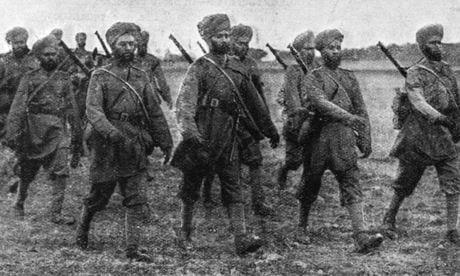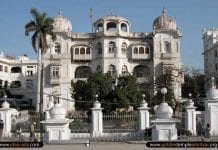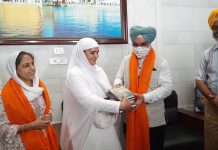

 LONDON, UK—As the world turns its attention to the centenary of the Great War, this summer will see a landmark exhibition by the UK Punjab Heritage Association (UKPHA) to commemorate the remarkable, but largely forgotten contribution and experiences of Sikh soldiers, as well as the families they left behind.
LONDON, UK—As the world turns its attention to the centenary of the Great War, this summer will see a landmark exhibition by the UK Punjab Heritage Association (UKPHA) to commemorate the remarkable, but largely forgotten contribution and experiences of Sikh soldiers, as well as the families they left behind.
‘Empire, Faith and War: The Sikhs and World War One’ will be held at the Brunei Gallery, School of Oriental and African Studies (SOAS), Russell Square, from July 9 to September 28.
Date: 9 July 2014 Time: 10:30 AM
Finishes: 28 September 2014 Time: 5:00 PM
Venue: Brunei Gallery
Type of Event: Exhibition
It will be the launch event of a three year project to reveal the untold story of how one of the world’s smallest communities played a disproportionately large role in the war to end all wars.
From the blood-soaked trenches of the Somme and Gallipoli, to the deserts and heat of Africa and the Middle East, the Sikhs fought and died alongside their British, Indian and Commonwealth counterparts to serve the greater good, gaining commendations and a reputation as fearsome and fearless soldiers.
Although accounting for less than a per cent of the population of British India at the time, Sikhs made up nearly 20 per cent of the British Indian Army at the outbreak of hostilities.
They and their comrades in arms proved to be critical in the early months of the fighting on the Western Front, helping save the allies from an early and catastrophic defeat, and yet their far from inconsequential role remains largely forgotten.
Undivided India provided Britain with a massive volunteer army in its hour of need. Close to 1.5 million Indians served, fighting in all the major theatres of war from Flanders fields to the Mesopotamian oil fields of what is now Iraq. Surprisingly, every sixth British soldier serving during the war would have been from the Indian subcontinent, making the British Indian Army as large as all the forces from the rest of the Empire combined, including the forces of Australia, Canada, New Zealand and South Africa.
The exhibition will see this untold, or at least forgotten, story put centre stage for the first time.
Speaking before the launch, UKPHA Chair Amandeep Madra said:
The British Indian Army’s contribution was actually greater than the better-known efforts of the white commonwealth countries of Australia, Canada and New Zealand put together. The non-white Empire’s efforts have largely been forgotten and their heroism and sacrifices omitted from mainstream narratives, or left as somewhat forlorn footnotes of history.
By telling the Sikh story we want to change that and remind the world of this wider undervalued contribution of the non-white British Empire. This is British history and a story that helps explain much about modern Britain as well as filling in a tragically missing piece of First World War history.
Between 2014-16 UKPHA’s “Empire, Faith & War” project will commemorate the Sikh contribution and will include the creation of a documentary film, a commemorative publication, education packs for schools, and a mini touring exhibition.
A core aspect of the project will be the database of soldiers’ and families’ stories which will be created with the help of the community in the role of “Citizen Historians”.
The public will be encouraged to either discover more about their own ancestors who fought, or to Adopt a Hero, with help from online guides and other resources. Crucially this will also include uncovering the lives of those left behind the wives, mothers and others who waited anxiously for loved ones to return.
The story of Sikhs in WWI will be told through original artefacts including unpublished photographs and drawings, newspapers and comics, postcards, stunning works of art, uniforms, gallantry medals, and folk songs sung by the wives left at home.
It will also feature a unique album of X-Rays of wounded Indian soldiers’ injuries by kind permission of The Royal Collection, Windsor.
The exhibition will be open from Tuesday through Sunday from 10.30 a.m. to 5 p.m., besides till 8 p.m. on Thursday.
It will be closed on Mondays and bank holidays. It will be closed on August 3. Admission is free.





Its not good to have a different committee in Haryana because of division but If dont have a separate committee then all the temple’s wealth is goes into big Badal stomach